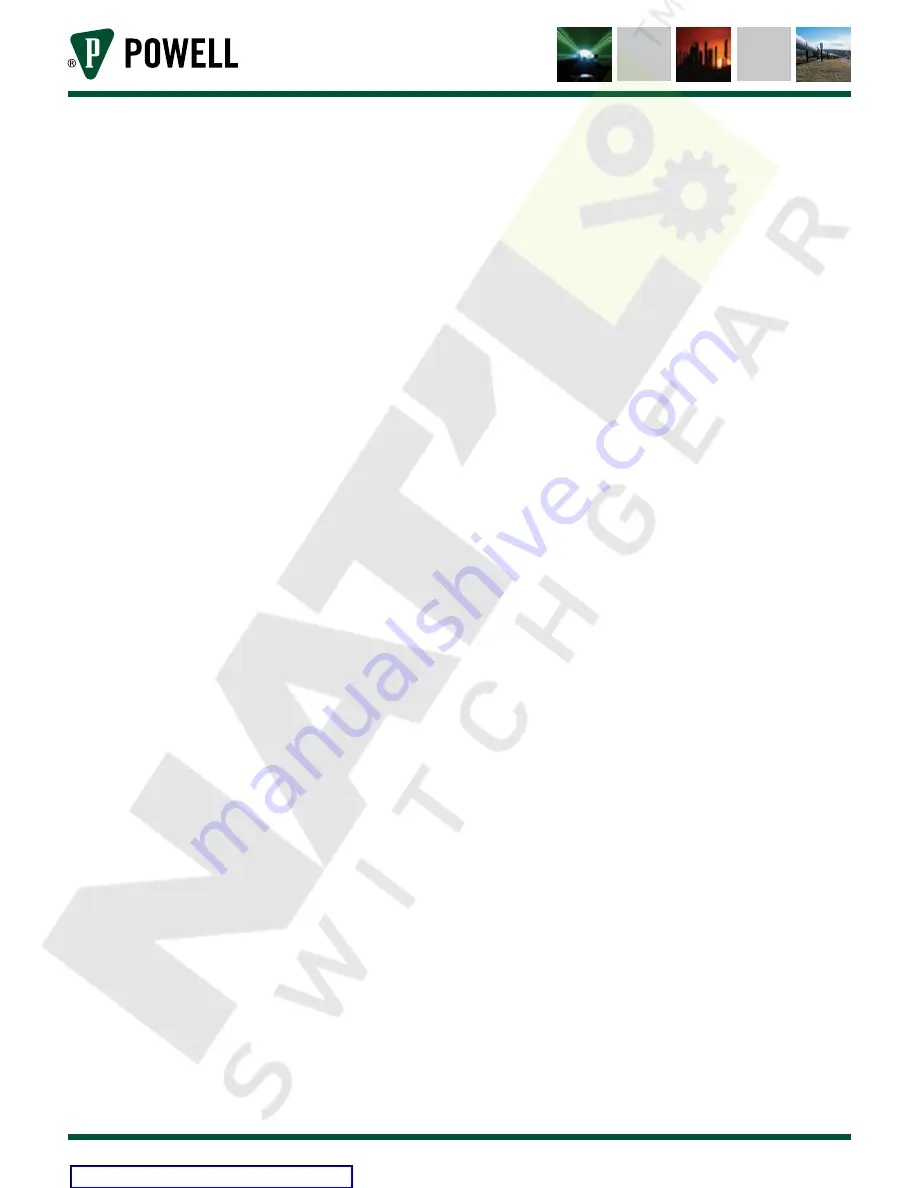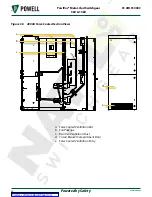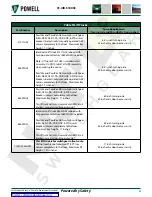
Powered by Safety
®
55
Maintenance
01.4IB.51000C
15) Interlocks
a. Shutter position interlock front door
component - verify that the actuator
on the opening side of the door slides
freely and operates the shutter position
flag. A small amount of A - Grease
should be used for lubrication. Close
the door and verify the position flag
changes from red to green. Rack the
circuit breaker slightly toward the
connected position and verify that the
flag moves from green to red. Verify
that the door cannot be opened.
b. Shutter position interlock right side
component :
i. Inspect for wear on latch and spring
assembly. Lubricate with A - Grease
as necessary.
ii. Inspect pivot points at top of
racking hook and on both glass
polyester linkages extending to the
shutters for wear.
16) Actuators
Verify alignment of the push-to-trip
actuator on the door to the mating actuator
on the circuit breaker floor pan. Verify that
there is no damage to the sliding actuator
on the floor pan and that is slides freely.
Lubricate with a small amount of A - Grease
if needed.
17) 4000A Versions Only
a. Inspect the inside of the circuit breaker
compartment near the forced cooled
ventilation entry vents (Figure 38, e) and
clean any loose debris and dust
build-up.
b. Clean any dust build-up on the forced
cooled ventilation exit (Figure 38, a) and
fan package (Figure 38, b).
c. Confirm fan operation and proper signal
from the alarm switches.
c. A
BnormAl
c
onDItIonS
Local conditions such as high ambient
temperature, high humidity, salt-laden
atmosphere, corrosive gases, heavy dust, ash,
severe circuit operating conditions, vermin,
or insect problems are considered to be
abnormal, and will require more frequent
inspections.
A series of inspections should be made at
quarterly intervals, until the local conditions
can be analyzed to determine a schedule that
will maintain the switchgear in satisfactory
condition.
In some locations, local conditions may be
so bad that the frequency of maintenance
will interfere with operating and production
schedules. In such cases, consideration should
be given to the possibility of enclosing the
switchgear lineup in a relatively tight room,
and to use filtered air handling units to supply
a sufficient quantity of clean air to maintain
a positive pressure in the room. Under such
conditions, maintenance schedules may then
be established on a more normal basis. Such
an arrangement might also provide for cooling
the air, where the ambient temperature
is relatively high, thus further improving
operating conditions. To add another level of
reliability, chemical filtration may be used in
addition to mechanical filtration.




















